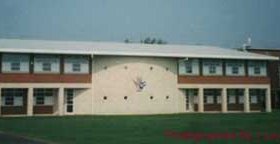



|
In May 1658, Charless II reviewed his fleet at Spithead, and here is a description of the ceremony observed. "The ship is in every part to be made neat and predie and to be trimmed with all her flags. On the first keen of the Royal Barge, the ship`s decks, tops and yard are to be manned and as if were hung with men. Upon the nearer approach of the Royal Barge the trumpets are to sound until he comes within less than musket of the ships side. Then all such as carry whistles are to whistle his welcome three several times and in every interim the ship`s whole company are to hail him with a joint shout after the custom of the sea". On 26th November 1703 the country was swept by the greatest storm on record. Forests of trees were uprooted, 13 mean-of-war were wrecked, 800 houses and 400 windmills blown down, and Eddystone Lighthouse was destroyed. The Newcastle was overwhelmed at Spithead and sank. The land on the eastern side of the island of Portsea, known as Great Salterns, was reclaimed from the Harbour in round about 1705. It was so named because of the existence nearby of a Little Salterns, the evaporation of sea water for the salt it contained having been a very ancient industry. Great Salterns was incorporated into the old county borough in 1895 and eventually converted into a golf course, playing fields and what is now Portsmouth College. |
|
|
|
Share this page
Tweet














